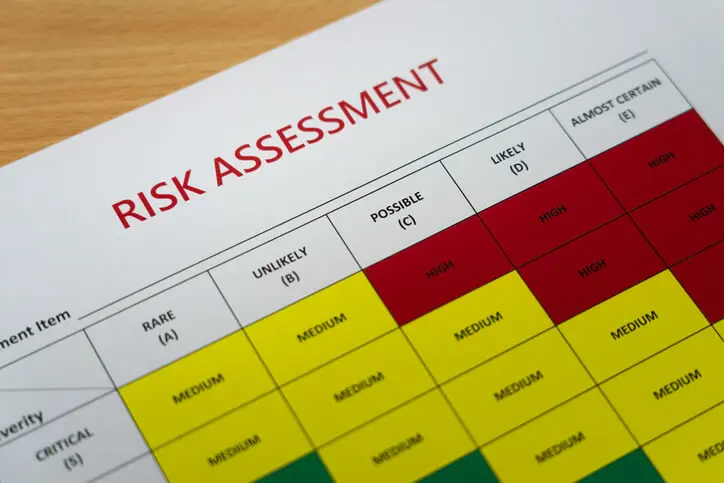Inventory management is critical for businesses as it ensures optimal stock levels, minimizing storage costs and maximizing cash flow. This efficiency leads to improved customer satisfaction by consistently meeting demand, while also streamlining operations, reducing errors, and aiding in accurate forecasting for informed decision-making. Moreover, it optimizes supply chains, mitigates risks, aligns with sustainability goals, and contributes to a company’s strategic edge. Overall, effective inventory management drives cost control, customer satisfaction, operational efficiency, and strategic advantages, which are pivotal for business success and sustainability.
Inventory management is implemented due to some of the risks surrounding inventory. Inventory risk encompasses uncertainties tied to managing inventory: stockouts causing lost sales, overstocking leading to financial losses, storage expenses, demand fluctuations, and supply chain disruptions. This article will be looking at what inventory risk is, and how companies can go about mitigating it with accurate forecasting, efficient planning, and agile supply chains.
What is Inventory Risk
Inventory risk encapsulates the potential uncertainties and adverse consequences associated with the management and holding of inventory within a business. It encompasses a spectrum of challenges and vulnerabilities that can significantly impact a company’s financial health, operational efficacy, and customer relations. This form of risk can emerge from various sources – from inadequate inventory levels leading to stockouts and missed sales opportunities, as well as excessive stock resulting in higher storage costs and potential product obsolescence. Additionally, inaccuracies in demand forecasting, supply chain disruptions, and seasonal fluctuations in demand contribute to this risk.
Effectively managing inventory risk involves implementing strategies such as precise demand forecasting, efficient inventory planning, maintaining optimal stock levels, and creating agile supply chains. Successfully navigating these risks is imperative for businesses to sustain profitability, streamline operations, and ensure customer satisfaction in a dynamic and competitive marketplace, as inventory risk can have a profound effect on a business’s profitability.
Types of Inventory Risk
Inaccurate Inventory Forecasting
Many organisations use inventory forecasting to manage their inventory levels by predicting future demand. Forecasting demand accurately is complicated due to various factors such as market volatility, changing consumer preferences, and seasonal variations. These factors may result in an over or underestimation of inventory requirements. Overestimating demand would result in excess inventory, tied-up capital, and excessive storage costs whereas demand levels that are underestimated run the risk of stockouts, lost sales, and dissatisfied customers.
Unreliable Suppliers
The supply chain can be disrupted due to suppliers experiencing quality issues, delays in deliveries, or any sudden disruptions. A disruption in the supply chain can have adverse knock-on effects, such as inventory shortages and affected production schedules. It is thus vital to have reliable and stable suppliers with whom you can cultivate strong relationships.
Shelf Life of Products
Perishable products with a limited shelf life pose specific challenges in managing inventory as additional consideration needs to be given to ensure that they do not expire. Because these products are easily spoiled, businesses face an increased risk of inventory obsolescence as items become unsellable at a faster rate.
Theft and Physical Loss
Inventory levels and the accuracy thereof are severely impacted by any theft or physical loss due to mishandling or accidents. These risks pose a threat to the financial success of a business as businesses experience financial losses from stolen or lost inventory. Businesses also have additional expenses to mitigate this risk as security measures are implemented. Read more on Inventory Shrinkage.
Damaged Stock
Stock that is damaged during any stage of the inventory cycle such as handling, storage, or transportation, may result in products that are unsellable or have to be sold at a discount due to the damage. Damaged stock results in a loss of revenue from unsellable products and has an even greater potential to damage a business’s brand and reputation.
Product Life Cycle Risks
Different products in inventory undergo different life cycle stages (introduction, growth, maturity, decline) which require different and relevant inventory management strategies. However, it can sometimes prove difficult to identify the life cycle of a product, and any unsolved issues that occur when predicting demand accurately across the various stages of the life cycle can result in overstocking of declining products or understocking products that are growing.
Process Risk and Control in Inventory
Processes are the backbone of effective inventory management, playing a crucial role in enhancing efficiency, accuracy, and optimization within a company’s inventory operations. Well-defined processes streamline tasks and reduce time wastage while boosting productivity. Furthermore, these processes ensure accuracy in inventory tracking and data recording, which assists management with informed decision-making and reduces errors in forecasting. Regimented workflows additionally aid in aligning inventory management with the broader supply chain, minimizing disruptions, mitigating risks, and fostering adaptability to changing business needs.
Common process risks in inventory management pose significant challenges to inventory accuracy and operational effectiveness. Inaccurate recording, often resulting from errors in data entry or manual tracking, leads to discrepancies in inventory levels. This impacts the accuracy of forecasting. Some businesses rely on manual methods which increases the likelihood of errors, delays, and inefficiencies, as overall productivity decreases. Furthermore, the absence of standardized procedures or inconsistent workflows creates confusion among employees and reduces efficiency. Some of these processes are also poorly documented. Consequently, it can be difficult to identify issues or errors. Some staff are subject to inadequate training regarding the inventory management systems, and as such, staff may make errors or underutilization the inventory systems.
Ultimately, these risks contribute to incorrect or inappropriate inventory levels due to poor decision-making or forecasting errors. This increases the risk of increased holding costs, stockouts, overstocking, compromised customer satisfaction, and strained supplier relations. Addressing these risks demands the implementation of robust inventory management systems, standardized procedures, comprehensive training, and the integration of technology to enhance accuracy and efficiency in inventory operations.
Inaccurate recording can be mitigated by utilizing barcodes to accurately track inventory or by performing regular audits and reconciliations of inventory. A business should aim to introduce automated inventory control systems to minimize manual errors. Businesses should also be encouraged to develop documented standardized procedures and to ensure staff are consistently trained with these systems and processes.
Strategies for Effective Inventory Risk Management
Inventory Value Tracking
It is important to understand the fluctuating value of assets. The value can be determined by monitoring the cost of inventory, its depreciation, and the potential of the inventory becoming obsolete. By tracking the value, stock levels can be optimized while factoring in pricing, liquidation, and reordering decisions. Inventory Value Tracking strategies are employed by using inventory valuation methods such as FIFO (First-In, First-Out) or LIFO (Last-In, First-Out). Read more in our blog articles on opening inventory and closing inventory.
Demand Forecasting
The aforementioned process of demand forecasting customer needs, when implemented and utilised accurately, can minimize inventory risks. Businesses use demand forecasting tools and software to maintain optimal stock levels, reduce stockouts, and prevent overstocking. This is accomplished by analyzing historical sales data and market trends. Read our dedicated blog article on AI demand forecasting.
Supplier Reliability Checks
It is crucial for suppliers to be consistent and reliable to ensure inventory stability, as unreliable suppliers can lead to disruptions in the supply chain. Businesses should conduct a thorough evaluation of potential suppliers by analysing their track records, financial stability, delivery timelines and quality control measures.
Security Measures
Security measures are implemented to prevent theft and loss of inventory. Robust security measures such as surveillance systems, access controls, and inventory tracking technologies can be implemented to protect assets and reduce the risk of theft or loss.
Regular Quality Checks
Products that can deteriorate increase the risk of becoming unsellable or damaged. Thus, it is important to ensure the quality and condition of stock by establishing stringent quality control procedures. This can be accomplished through regular inspections and by investing in quality assurance systems.
These inventory risk management strategies utilize a combination of technological solutions, standardized processes, thorough assessments, and continuous monitoring. By integrating these strategies, businesses can practice better risk management and minimize any inventory risk.
Modern Tools and Solutions for Inventory Management Risk
Modern tools like cloud inventory management software and third-party logistics providers have revolutionized inventory management and the operations of supply chain. Both cloud inventory software and third-party logistic providers have become vital in streamlining operations, enhancing supply chain visibility, and enabling businesses to focus on core strategies amidst dynamic market demands.
Cloud-based inventory systems operate through internet-hosted applications. These systems offer real-time visibility and accessibility, without having to rely on on-site servers. They encompass features like inventory tracking, order management and demand forecasting. A major advantage of cloud-based systems is their ability to seamlessly integrate with other business systems. Many businesses implement a cloud system as it provides them with flexibility. This is enabled through being able to access the system remotely and it automatically updates.
On the other hand, third-party logistics providers (3PLs) offer outsourced logistics services. These can include activities such as managing warehousing, delivery, order fulfilment, and inventory management. By leveraging the third party’s expertise and infrastructure, smaller businesses benefit from using outsourced warehouses, inventory systems, or delivery fleets. This allows the small business to achieve cost savings from a reduced investment in capital. Some third-party logistics providers specialize in particular services or industries, catering to diverse business needs.
Customizable strategies like Inventory Skew, Filled Order Delay, and Hanging Orders offer tailored approaches within inventory management systems. Inventory Skew involves adjusting inventory levels based on demand and prioritizing fast-moving items for higher stock quantities to enhance turnover. Filled Order Delay intentionally postpones order fulfilment to optimize shipping efficiencies or batch processing. Hanging Orders temporarily delay fulfilment to verify accuracy or await additional stock. These strategies allow businesses to fine-tune inventory operations, improving efficiency, reducing costs, and ensuring accurate order processing and customer satisfaction through strategic inventory and fulfilment management.
Why is Inventory Risk Important?
Understanding and managing inventory risks is crucial for businesses to navigate potential issues effectively. It allows proactive mitigation of challenges like forecasting errors, supplier issues, product quality, and security vulnerabilities. Effective management leads to optimized stock levels, reduced costs, improved customer service, and enhanced operational adaptability. Ultimately, managing inventory risk ensures sustained efficiency, profitability, and competitiveness.
By investing in inventory risk management tools, you are provided with insights into demand patterns, which can streamline workflows, improve accuracy, and reduce stock-related issues. Strategies like automation and customized approaches enhance resilience, ensuring smoother operations and improved customer satisfaction. Overall, these investments position businesses for growth, fostering agility, efficiency, and long-term profitability in dynamic market environments.
Intuendi is a best-in-class demand planning tool which helps businesses analyse inventory risk and provide more accurate forecasts.






